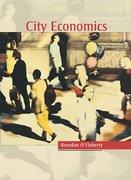4. Suppose that in any minute there is a 2 percent probability that each student will disrupt...
Question:
4. Suppose that in any minute there is a 2 percent probability that each student will disrupt a class. In any minute in which one or more students disrupt a class, no one learns anything—it doesn’t matter whether one student is disrupting or ten.
a. In a random minute in a class with twenty students, what is the probability that none is disrupting? What is the probability in a class with thirty students?
b. Each class lasts 100 minutes a week, and after a semester, a student’s test score equals the number of uninterrupted minutes she experienced in an average week. What’s the expected test score in a class with twenty students?
In a class with thirty students?
c. Suppose you have one class with twenty students and another class with thirty students. What’s the marginal cost (to the receiving class), measured in test points, of having one student transfer from the small class to the large class? How many points does that student lose? What is the marginal benefit to the remainder of the smaller class? Does this move increase or decrease the average score over the two classes? In this model, if the goal is maximizing the average score, would the two class sizes be equalized?
d.Why would maximizing the average test score be an appropriate goal?
Are there any other goals that would be more appropriate? Would those goals imply equalizing class size?
Step by Step Answer:







